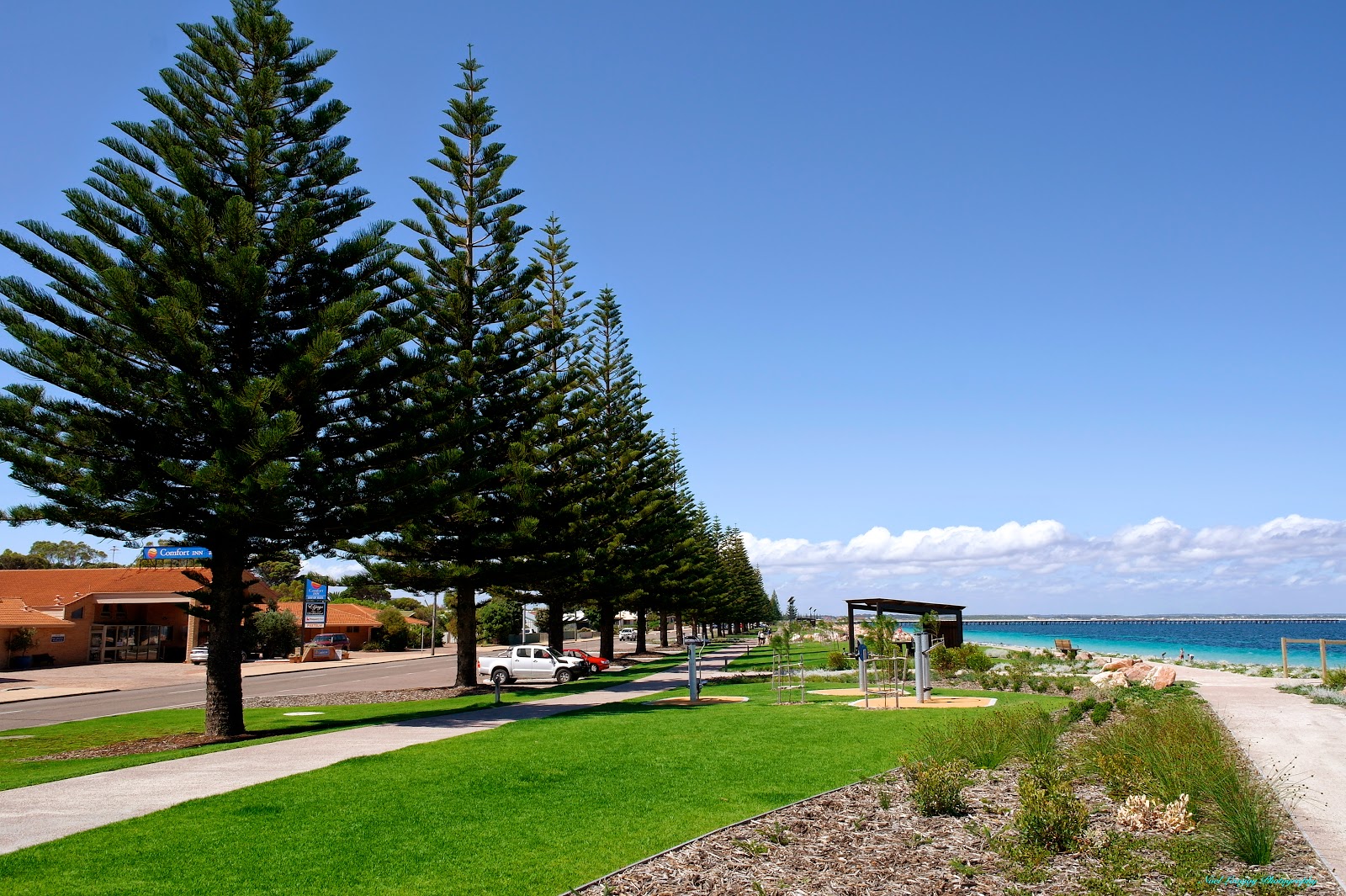We had been told of a camp at Quagi Beach (kwar-gee) with limited sites at $5 per night and situated adjacent to a very long white sandy beach. We found that there were relatively small sites and minimal facilities but we paid for three nights to check it out. It seemed most of the campers were there for the entire summer period because of the low tariffs. Many of them had been here previous years. We felt uneasy about being there and left after two nights moving along to Stokes Inlet NP. This camp area has excellent facilities and friendly Camp Hosts Drummond and Jean made us feel welcome. It is the December Equinox, thus the beginning of Summer and it is raining! We've had about 25 mm here since yesterday afternoon and through the night. Other areas experienced double that amount or more. We will be having Christmas Lunch at the Camp Kitchen with the Hosts and the Park Ranger.
We plan to move along, heading inland again, on the Saturday after Christmas and Boxing Day.
The shoreline of Stokes Inlet. The Inlet is fed from two rivers, The Young and The Lort. The Sand Bar at the outlet is closed and is only forced open every few years after heavy inland rains.
This is one of four Camp Kitchens. All the facilities here at Stokes Inlet have been rebuilt following Bush Fires of 2006.
One of the many 'Bob Tail' Dragons that frequent the Park. This specimen is about 30 cm in length but we did see one that was at least 45 cm long.
There is a great walk through the Park that displays most of the natural flora of the area, Serrated Banksia here on the right of the path are playing havoc with my hay fever allergy.
Grass Trees are here too.
There are many Zamia Palms, this is probably the largest that is easily seen but there are hundreds of other smaller specimens.
While walking the path between the Camping Area and the Day Visit Area you cross a limestone rise. This is looking back towards the Camping Area which is around behind the small land spit seen in the middle ground.
From the elevated path overlooking the Day Visit Area Camp Kitchen. The Stokes Inlet Sand Bar is not visible but is to the right of picture. One negative point to the Park is that The Beach and Sand Bar are not easily reached from the Public Areas. There is no vehicle or walking track available. One must walk 3.5 km around the shoreline of the Inlet and this is not an easy walk at all.
One day we went for a drive further West along the South Coast to Fitzgerald River National Park. This NP is very different to Stokes Inlet, this being very rugged with steep rocky walks but it also has retained water similar to Stokes Inlet. Looking back East towards the small town of Hopetoun the water visible in the left middle ground is Culham Inlet and is also retained by a Sand Bar.
The rugged terrain of East Mt Barren.
On the drive out to Fitzgerald River NP we came across this gigantic Tea Set. People make this stuff to sell!






















































